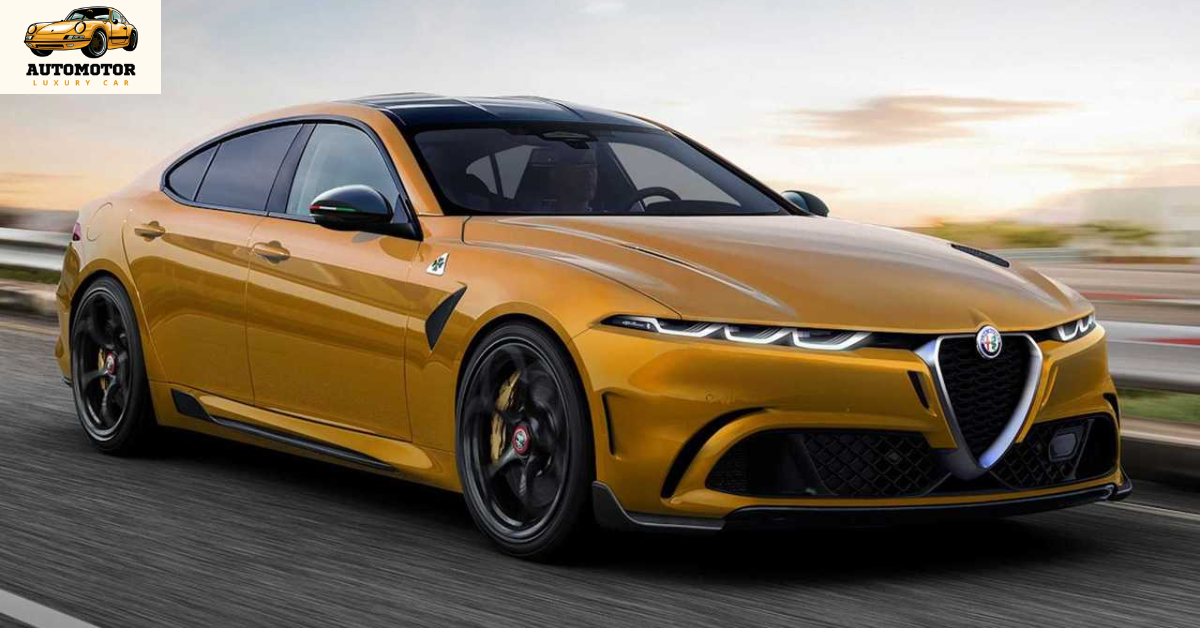Alfa Romeo is reinventing one of its most beloved icons for the electric era: the Giulia sedan. Slated for a 2026 debut, the all-electric Giulia EV arrives as an essential piece in Alfa’s bold plan to go fully electric by 2027, while preserving the brand’s signature blend of Italian style, performance, and emotional appeal. Here’s a look at what we know so far—and what makes this new Giulia shape-shifting beyond any prior expectations.
1. Alfa’s electrification roadmap
Stellantis has confirmed that the electrified transformation of the Giulia will debut in 2026, built on the all-new STLA Large platform, following the Stelvio EV launch in 2025. This EV platform supports 800‑volt architecture for ultra-fast charging and introduces the innovative STLA Brain and SmartCockpit system for advanced digital integration. Despite its electric focus, Alfa isn’t ruling out hybrid powertrains: CEO Santo Ficili has indicated a “multi‑energy” lineup could be offered, depending on market demand.
2. Powertrain & Performance
At the heart of the Giulia EV will be dual electric motors driving all four wheels. Power output is expected to range from 345 hp in the base version to approximately 800 hp in the Veloce trim, with a Quadrifoglio variant reportedly aiming for a staggering 1,000 hp—making the EV version significantly faster than today’s V6 petrol model. Autocar and Motor1 suggest that the high-performance version might sprint from 0–62 mph in close to 2 seconds, rivaling the quickest modern super‑saloons.
Battery capacity is expected to fall between 101 kWh and 118 kWh, delivering WLTP-equivalent range up to 700 km (~435 miles) and fast charge to 80% in as little as 18–20 minutes, thanks to the 800‑volt system.
3. Design: tradition meets futuristic flair
Visually, the Giulia EV marries Alfa’s iconic sedan silhouette with fluid dynamics and cutting-edge cues. It retains signature elements such as the Scudetto grille—now reinterpreted as a digital or flush panel—and sculpted body panels to reduce drag. Some reports indicate Alfa may adopt a hybrid shape between classic saloon and shooting brake, blending practicality with sport elegance.
Expect aerodynamic finishes—like Teledial wheels, flush door handles, and active underbody management—and subtle LED lighting signatures that modernize yet honor heritage. The overall aesthetic is clean, forward‑leaning, yet unmistakably Alfa.
4. Interior & tech evolution
Built atop the STLA SmartCockpit and STLA Brain platforms, the Giulia EV offers a tech-forward but driver-centric cabin. A curved OLED 14″ infotainment display, integrated with OTA updates, voice assistants such as Alexa, CarPlay, and seamless in-car AI will define the user experience.
The instrument binnacle retains the classic “cannocchiale” telescopic design for the driver, complementing a minimalist, focused space. The head‑up display may project dynamic line guidance—Alfa’s way of combining performance with everyday usability.
Sustainable materials—including recycled cabin components and vegan upholstery—reflect Alfa’s eco-conscious direction. A solar‑roof option could add supplemental range, reinforcing the brand’s carbon‑neutral goals.
5. Driving experience: soul of performance, mind of precision
Alfa has long celebrated a dynamic and emotional driving experience, and the Giulia EV seems primed to carry that torch. With instant electric torque and AWD, the Quadrifoglio variant promises hyper‑responsive throttle and razor‑sharp cornering. Torque vectoring and adaptive suspension, integrated with selectable drive modes (Dynamic, Natural, Efficiency), aim to mimic the well‑judged feel Alfa drivers expect.
Despite its electric underpinnings, the new Giulia is engineered to avoid the bulk of comparable EVs by leveraging lighter wiring (thanks to 800 V system) and smart chassis tuning, preserving agility and steering precision.
6. Market outlook & practical impact
With its expected launch in 2026, the Giulia EV slots into a more competitive luxury EV segment—positioning itself as an Italian alternative to the BMW i4, Tesla Model 3/Y, and Polestar sedans. Alfa Romeo intends to maintain some hybrid variants to cater to markets slower in EV adoption.
The Giulia EV aligns with Stellantis’s €2 billion investment in Italian manufacturing, reinforcing production at the Cassino plant with STLA architecture for flagship models.
7. Why the Giulia EV matters
Alfa Romeo’s Giulia EV isn’t just another EV—it represents the storied brand’s rebirth. It balances track-biased credentials and evocative design with zero‑emissions technology and modern usability. With forecasts of 1,000 hp in Quadrifoglio form, class-leading range, and ultra‑fast charging, it promises to deliver emotion and efficiency in equal measure.
For traditionalists, the EV Giulia may be a leap—but Alfa aims to preserve driving authenticity even in its electric renaissance. If executed as promised, the Giulia EV could be the most compelling blend of Italian passion and future-ready performance in its class.
Conclusion
The Alfa Romeo Giulia EV is shaping up to be a watershed vehicle—in spirit, design, and technical innovation. With a planned 2026 arrival, high-power variants, long-range capability, and a futuristic yet familiar aesthetic, it symbolizes Alfa’s ambitious electrification journey. From its driver-oriented cockpit to its eco-conscious materials and track-honed driving dynamics, this isn’t just an electric sedan—it’s a bold redefinition of Alfa Romeo for the electric age.
